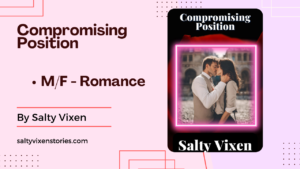There are songs so closely associated with Christmas that their appearance at any other time seems inappropriate, like a Hawaiian shirt worn to a wedding, or a bridesmaid's dress worn anywhere. Yet, many of these songs aren't even about Christmas. They are, at best, winter songs. It's time to free these songs from their Yuletide time-prison and let them be heard at any time! Well, any time in the winter, that is.
We're not alone on this one. If you type "My Favorite Things not a" into Google, the only autocomplete suggestion is "Christmas song." And yet, it appears on Christmas albums by the Supremes, Barbara Streisand, Andy Williams, Brian Setzer, Luther Vandross and Kelly freaking Clarkson, just to mention a few. Why? Why on earth has this pretty little song from The Sound of Music been declared a Jesus birthday anthem? Because it mentions snowflakes? Snow is in no way exclusive to Christmas. Ask anyone from Minnesota. In March. Sleigh bells? Look, not every sleigh is Santa's sleigh, okay? (More on that later). Brown paper packages tied up with strings? If, as a child, you woke up on Christmas morning and rushed to the tree to find a pile of brown paper packages tied up with strings waiting for you, then your parents failed Christmas. We hate to be the ones to break it to you, and now you'll have to be the one to break it to them.
Other "favorite things" the song mentions:
- Raindrops
- Whiskers
- Ponies
- Doorbells
- Spring
Things the song does not mention:
- Santa
- Jesus
- Christmas
In the movie, Maria sings this song to the children during a thunderstorm, not a tree-trimming party. It's a tool to help them deal with unpleasant emotions, not a yuletide hymn.
Oh, man! Don't you just feel all Christmas-y listening to that? Can't you just see the tree and the lights and the presents? Wait . . . Those things aren't in the song? In fact, there's nothing at all about Christmas in there? Nope. This lovely song is purely and simply about staying in and boning on a cold night. We'll admit that's a hell of a good plan, but it's not (necessarily) a Christmas plan.
Songwriters Sammy Cahn and Jule Styne were suffering through the 1945 L.A. heat wave while wearing 1940s men's fashions. To take their minds off the lung-shriveling heat, the two decided to write a song about winter. They swapped stories about being stranded by snowy weather, which to their heat-crazed minds had begun to seem like a beautiful idyll rather than the uncomfortable pain in the ass anyone who has lived through it knows it to be. They eventually developed the idea of a song about two lovers being snowed in together because nothing can't be improved with a little hubba-hubba. The song was released just after Thanksgiving. It kept selling long after Christmas, well into February, which makes sense, seeing as how it's a much more appropriate Valentine's Day song than Christmas song. However, by the 1950s, the song was firmly associated with Christmas, and Dean Martin's scotch-soaked 1960s take on his Christmas album sealed the deal.
This is a song about taking a walk in the snow, creating a frozen clergy impersonator, and then going inside and maybe doing some boning. It was not born out of Christmas spirit, unless by "Christmas spirit" you mean "horrifying terminal illness."
In 1934, songwriter Dick Smith was dying of tuberculosis in a Pennsylvania sanitarium. One winter afternoon, he dragged his ass out of bed to look out a window at a city park for a while, because in 1934 you could not watch the entire series run of Quantum Leap on Netflix. He saw some kids playing in the snow. Whereas you or I would have smiled at their antics for a moment and then gone back to fantasizing about that one nurse on the midday shift, Smith was inspired to write a song. He combined what he had seen with some of his own memories. Then, he added a little romance, because this was the early twentieth century and he was writing a song about snow, damn it.
He rallied enough to take the lyrics to Felix Bernard, who wrote a jaunty tune to go along with them. For months, the song went around the publishing community. Finally, the Richard Himber Orchestra, which you have most definitely not never heard of, recorded the song. When Guy Lombardo heard it, he rushed out his own version -- just in time for Christmas. The song hit number two on the charts. Lombardo's fortuitous and not at all mercenary timing helped cement "Winter Wonderland" into the public consciousness as a Christmas song, although nothing about Christmas appears in the song at any point. Smith lived long enough to see his song be a hit for Lombardo, but because this is real life and not a Hallmark Hall of Fame movie, his triumph didn't enable him to cure his own tuberculosis. He died the next fall, and so missed out on the nonstop stream of recordings of "Winter Wonderland" by everyone from Rosemary Clooney to Ozzy Osbourne.
Someone in the 1950s, believing that people were too stupid to know what a parson is, created a new, worse version of the lyrics, replacing the snowman parson with a snowman circus clown and, just for giggles, taking out the romantic references. And they still didn't mention Christmas. By the sixties, pretty much everyone was back to using the original lyrics, so that was all right.
Look, not every sleigh is Santa's sleigh, okay? The one in this song doesn't fly and isn't pulled by reindeer. It just slides along the ground and goes to a birthday party. That's right: birthday party, not Christmas party. And no, it's not Jesus' birthday.
Like "Let It Snow," this song began with a songwriter thinking about snow on a hot day. In 1946, Leroy Anderson was dealing with one of the hottest days of that year in New England, and of course wearing 1940s men's fashions. He decided to take his mind off the sweat pooling in his wool slacks by composing a song that would suggest a winter sleigh ride. Anderson was so confident in his ability to evoke winteriness through music that he never even considered lyrics. Evidently, however, that confidence was a bit misplaced, as it took him two years to finish the song. He then passed it along to Boston Pops conductor Arthur Fiedler, who loved the hell out of it. Fiedler recorded it and released it in -- when else? -- early winter.
Even though Fiedler didn't consider it a real holiday song, the public quickly associated it with Christmas. Before long, singers were dying to croon out a version of the song with lyrics. Apparently, just humming along wasn't good enough for them. Michael Pashelinsky took on the challenge of putting words to the music. Pashelinsky may have felt equal to the task because in songwriting circles, he was known by another name: Mitchell Parish, AKA the guy who wrote freaking "Star Dust." Pashelinsky (or Parish) painted a perfect verbal portrait of a sleigh ride full of wintery imagery and completely lacking in elves, angels, and colorful lights.
The song has held up pretty well. "Sleigh Ride" has been performed by more artists than any other piece of Western music, and not once has a Christmas tree been found hiding somewhere in the lyrics.
I know this is a tough one, but it's true: Despite what the Rankin/Bass TV special would have you believe, Frosty does not depend on Christmas magic. He just needs a cold snap. And his magic hat. Can't forget the hat.
In 1950, Gene Autry's career as a country star was drying up. Over the previous couple of years, though, he'd had hits with "Here Comes Santa Claus," "Rudolph the Red-Nosed Reindeer," and "Here Comes Peter Cottontail." Autry was discovering a second life as a purveyor of insanely infectious children's holiday songs. Autry started seeking out song pitches, hoping to score his next hit. Songwriters Jack Rollins and Steve Nelson had written Autry's Easter song, "Here Comes Peter Cottontail." They got to work again, trying to craft the perfect song to delight children and enrage retail employees. They toiled for months until they finally hit the jackpot with their tale of a snowman come to life.
They presented the song to Autry, and -- pay attention here -- what really excited Autry was that the song was not specifically tied to Christmas. It might be more than just a holiday hit! Of course, he was hilariously wrong. The song is now inextricably tied to Christmas, but it did become a huge hit, cracking the top ten by Christmas Day. Since then, "Frosty the Snowman" has spawned a best-selling book, a seemingly immortal TV special, and recordings by hundreds of artists. If anyone with the resources ever figures out that it doesn't have to be confined to Christmas, the Frosty franchise might take over all media.
No. "Jingle Bells"? Cannot be. It's the Christmas song! It's the song that makes Santa's eyes go all twinkly at the beginning of Miracle on 34th Street. Santa's heart actually beats out its rhythm in The Santa Clause.
Well, sorry, but "Jingle Bells" has exactly bug squat to do with Christmas. No Santa, no Baby Jesus, no tinsel, no presents. Snow? Snow doesn't confine itself to the holiday season. And Christmas doesn't always come with snow. Take a trip to Austin (or Australia) in December and send us a report. Sleigh bells? Not from Santa's sleigh. As the song points out ad nauseam, this sleigh is drawn by ONE HORSE, not eight reindeer, tiny or otherwise. As far as anyone can tell, James Pierpont wrote this song in a tavern after watching some sled races. This is a song about drag-racing and picking up chicks. It's basically a Beach Boys song set in nineteenth-century New England.
In the 1840s, James Pierpont was choirmaster of the Unitarian church where his father was the pastor. Coincidence, surely. Pierpont Sr. asked Junior to come up with a song for a Thanksgiving service, even though Thanksgiving was not yet an official holiday. The Pierponts were just that cutting edge. James, given this golden opportunity, promptly choked. He took a break from his writer's block to watch some young dudes sledding down a hill, and -- what the hell? -- even took a few turns himself, in the time-honored manner of procrastinators everywhere.
The sledding reminded him of the horse-drawn sleigh races he and his friends used to have when he was younger, and more important, of the way the local honeys would hang all over the winners. This kind of inspiration was just what he needed for his Thanksgiving church song. Off he went to Simpson's Tavern, which had the only piano in town, to work out the melody.
He presented the finished song -- including a verse about picking up a chick named Fanny Bright and totally flipping his sleigh, and another verse exhorting the listener to "go it while you're young," "take the girls tonight," and drag-race -- to his minister/father. With what was probably the most pointedly resigned dad-sigh of the first half of the nineteenth century, Pierpont Sr. let James teach the song to the children's choir.
At the Thanksgiving service, the packed church went completely bughouse for the new song. It was so popular that the choir performed it again at Christmas services. The church was crammed with holiday visitors, who reasonably assumed that this was a new Christmas song, and took it back to their own communities, where it started to earworm out of control. James found a publisher for the song in 1857, just in time for Christmas to start shaping up as the major American holiday we know. By 1870, it was the most popular Christmas carol in America. And that's the story of how a Thanksgiving song about dating and racing became your favorite Christmas song.
But take heart: Nobody's saying you can't sing these songs at Christmas. The point is that they're not just for Christmas. You can sing them any time you want!
As long as that time is winter.




















